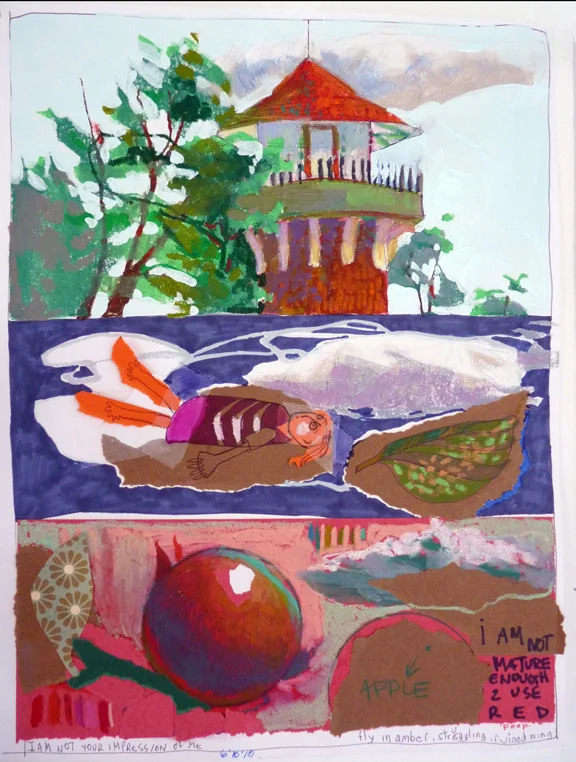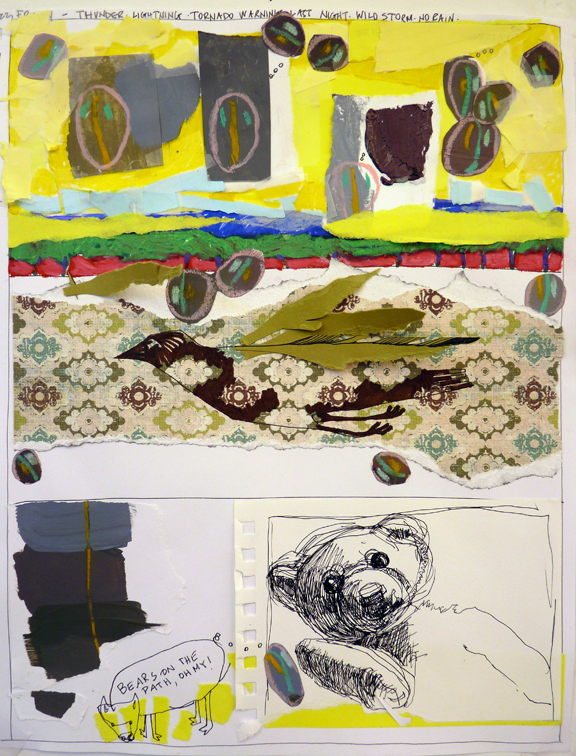This work is domestic the way crazy quilts and home deaths are. The pages developed slowly and in the dark—as if that itch on your back you can never reach grew into a third arm.
It began simply as a doodle around a prep list but then quickly spread, engulfing my imagination like a swarm of bees.
The protagonist, Diq (with umlauts over the “I”), is a genderless being faced with the existential question of how to communicate with its mother, who has lapsed into a coma.
Diq begins by awkwardly reading poetry to the mother's decomposing body, but soon realizes that the ears
have closed and the eyes no longer see. The panels then move into a stream of consciousness, drawings and captions cataloging and embroidering internal dialogue. Flat image drawings mix with pop-up pages and abandoned or reclaimed fragments, while characters, symbols, and totem animals writhe or dance across the pages, all morphing and twisting through a memoir of visual addiction and homeless, restless love.
























